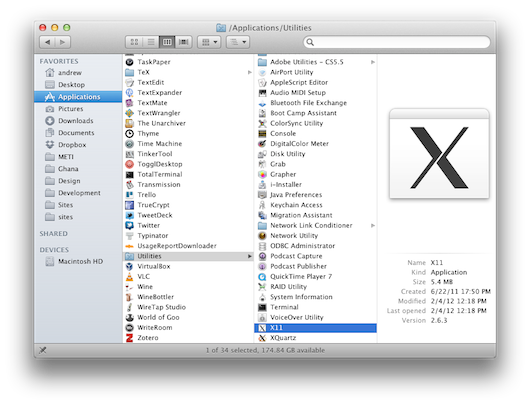

- R EDITOR FOR MAC MAC OS X
- R EDITOR FOR MAC MAC OS
- R EDITOR FOR MAC CODE
You can get the latest version (7.3.53 at time of post) at github:
R EDITOR FOR MAC MAC OS
One commenter asked about getting it to work on Mac OS X.įirst of all, I highly recommend the MacVim port of Vim (not to be confused with ). Michael Bojanowski wrote a blog post on using R with Vim on an Ubuntu machine. Once you get past the fairly steep learning curve, nothing comes close to it in terms of coding efficiency and navigation except perhaps Emacs, but let’s not go there. However, when coding in R and pretty much any other language, Vim has always been my goto text editor of choice.
R EDITOR FOR MAC CODE
Block code execution (with blocked command history).In fact it is much better than its Window’s counterpart.
R EDITOR FOR MAC MAC OS X
In Figure 4.4, I have a new script called examplescript with a few random calculations.The built-in script editor for the Mac OS X R GUI actually isn’t bad. When you open a new script, you’ll see a blank page waiting for you to write as much R code as you’d like. I don’t know what it is on PC…and I don’t want to know. Shortcut! To create a new script in R, you can also use the command–shift–N shortcut on Mac. To start writing a new R script in RStudio, click File – New File – R Script. In RStudio, you’ll write your R code in the…wait for it… Source window. R suffix to make it clear that it contains R code.} in an editor. You can write an R script in any text editor, but you should save it with the. An R script is just a bunch of R code in a single file. For this (and many more reasons), you’ll should write any important code that you want to save as an R script. So if you make an error, or want to make a change to some earlier code, you have to type it all over again. However, the problem with writing all your code in the console is that nothing that you write will be saved. For example, to open a help menu for a new function with the ? command, to take a quick look at a dataset with the head() function, or to do simple calculations like 1+1, you should type directly into the console. There are certainly many cases where it makes sense to type code directly into the console.
18.5 Chapter 8: Matrices and Dataframes. 18.4 Chapter 7: Indexing vectors with. 17.4 Loops over multiple indices with a design matrix. 17.3 Updating a container object with a loop. 17.2 Creating multiple plots with a loop. 17.1.2 Adding the integers from 1 to 100. 16.4.4 Storing and loading your functions to and from a function file with source(). 16.4.2 Using stop() to completely stop a function and print an error. 16.3 Using if, then statements in functions. 16.2.3 Including default values for arguments. 16.2 The structure of a custom function. 16.1 Why would you want to write your own function?. 15.5.2 Transforming skewed variables prior to standard regression. 15.5.1 Adding a regression line to a plot. 15.5 Logistic regression with glm(family = "binomial". 15.4 Regression on non-Normal data with glm(). 15.3 Comparing regression models with anova(). 15.2.6 Getting an ANOVA from a regression model with aov(). 15.2.5 Center variables before computing interactions!. 15.2.4 Including interactions in models: y ~ x1 * x2. 15.2.3 Using predict() to predict new data from a model. 15.2.2 Getting model fits with fitted.values. 15.2.1 Estimating the value of diamonds with lm(). 14.7 Repeated measures ANOVA using the lme4 package. 14.6 Getting additional information from ANOVA objects. 14.5 Type I, Type II, and Type III ANOVAs. 14.1 Full-factorial between-subjects ANOVA. 13.5.1 Getting APA-style conclusions with the apa function. 
13.1 A short introduction to hypothesis tests. 12.3.1 Complex plot layouts with layout(). 12.3 Arranging plots with par(mfrow) and layout(). 11.10 Test your R might! Purdy pictures. 11.8 Saving plots to a file with pdf(), jpeg() and png(). 11.7.5 Combining text and numbers with paste(). 10.6 Test your R might!: Mmmmm…caffeine. 9.6.3 Reading files directly from a web URL. 9.1.1 Why object and file management is so important. 8.7 Test your R might! Pirates and superheroes. 7.3.1 Ex: Fixing invalid responses to a Happiness survey. 7.2.2 Counts and percentages from logical vectors. 6.2.3 Sample statistics from random samples. 6.2.2 Additional numeric vector functions. 4.4.4 Example: Pirates of The Caribbean. 4.3.1 Commenting code with the # (pound) sign. 4.3 A brief style guide: Commenting and spacing. 4.2.1 Send code from an source to the console. 1.5.2 Getting R help and inspiration online.






 0 kommentar(er)
0 kommentar(er)
